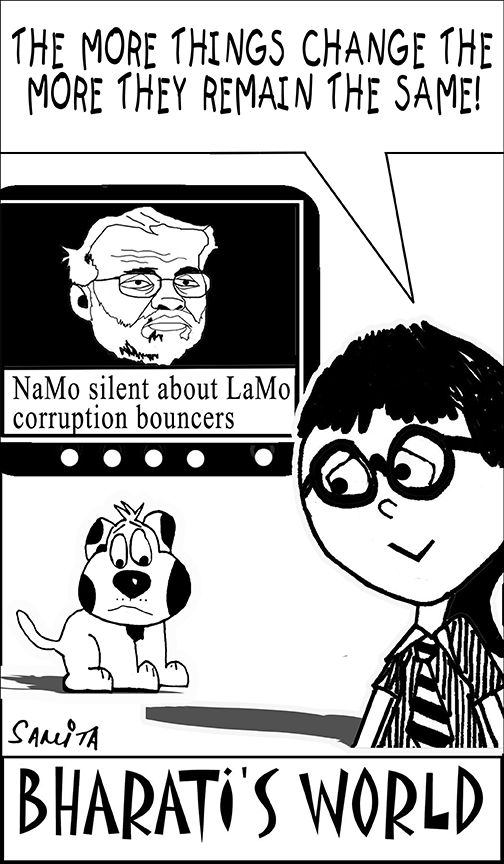 With the first term of the Trinamool Congress (TMC), which ended the 34-year continuous rule of the Communist Party of India-Marxist (CPM)-led Left Front coalition over West Bengal (pop.91 million) in the state assembly election of 2011, nearing its end, chief minister Mamata Banerjee is pulling out all stops to woo a disenchanted electorate by announcing a slew of development projects. Despite an overwhelming mandate in May 2011, thus far TMC’s rule in Bengal has at best been marginally better than Communist rule. The past four years have been characterised by constant law and order problems created by the Chhatra Parishad — the youth wing of TMC — college/varsity campus unrest and rising youth unemployment as industrial investment has failed to pick up. With assembly elections due next summer, Banerjee has unveiled several education initiatives to woo the youth vote. The first of them is a grant of Rs.5 crore to the Jagadis Bose National Science Talent Search (JBNSTS) Society (estb. 1960), in Kolkata, for setting up a science innovation centre.
With the first term of the Trinamool Congress (TMC), which ended the 34-year continuous rule of the Communist Party of India-Marxist (CPM)-led Left Front coalition over West Bengal (pop.91 million) in the state assembly election of 2011, nearing its end, chief minister Mamata Banerjee is pulling out all stops to woo a disenchanted electorate by announcing a slew of development projects. Despite an overwhelming mandate in May 2011, thus far TMC’s rule in Bengal has at best been marginally better than Communist rule. The past four years have been characterised by constant law and order problems created by the Chhatra Parishad — the youth wing of TMC — college/varsity campus unrest and rising youth unemployment as industrial investment has failed to pick up. With assembly elections due next summer, Banerjee has unveiled several education initiatives to woo the youth vote. The first of them is a grant of Rs.5 crore to the Jagadis Bose National Science Talent Search (JBNSTS) Society (estb. 1960), in Kolkata, for setting up a science innovation centre.
This modest grant “to promote science and encourage children to take up scientific activities” was announced by Banerjee while attending a meeting of the institute’s governing body on June 2. The amount will be disbursed in two installments by the education ministry. In addition, Banerjee also decreed Rs.38 lakh per year to the institute to pay monthly stipends of Rs.500 to talented class XI-XII students.
Conceptualised in 1958 by West Bengal’s first chief minister Dr. B.C. Roy, JBNSTS was promoted to commemorate the birth centenary of India’s first modern scientist, Acharya J.C. Bose, and enjoys the status of a special institution under the supervision of the department of higher education of the state government. Its main objective is to identify and select 100 class XI-XII students per year for scholarships/stipends to pursue higher secondary studies in science (physics, chemistry, biology) and maths.
Since the first scholars were selected in 1960, more than 53 batches of talented children have been enabled to stay the course, i.e, complete secondary education with most signing up for undergraduate programmes in science, engineering and medicine. JBNSTS scholars who sign up for basic sciences undergrad programmes, automatically qualify for a Rs.80,000 per annum scholarship of the department of science and technology of the government of West Bengal, under the INSPIRE-SHE scheme.
Academics and research scholars in the state have welcomed this initiative to promote science and maths learning. Tamo Chattopadhyay, an alum of the Columbia University Teachers College and former faculty at the National University of Educational Planning and Administration (NUEPA), Delhi, suggests that the innovation centre could well become a knowledge hub and train teachers to teach STEM (science, technology, engineering and maths) subjects in new and interesting ways.
Dr. Garga Chatterjee, assistant professor at the Indian Statistical Institute, Kolkata, suggests that the new innovation centre should pair students with collegiate research faculty willing to nurture talented youth in state government schools. “The focus has to be on West Bengal state board students, especially those from Bengali medium schools who receive very poor quality STEM education. Only when JBNSTS reaches these untapped but eager minds, will it benefit the state and society. Funding is important, but what’s more important is how it’s used. If it’s used to build more rooms and create clerical employment as in the past, the centre will be a flop,” he warns.
Perhaps by now, after four tempestuous years in Writers Building, Kolkata — the admin headquarters of the West Bengal government — Banerjee has learned that launching new schemes is easy. Implementing them effectively is the difficult part.
Baishali Mukherjee (Kolkata)